Popular categories
Looking for a yarn?
Order DROPS Needles & Hooks
Clicking the ORDER button will redirect you to Saules siulas website
The yarn cost is calculated from the pattern’s smallest size and the yarn’s cheapest product type. Looking for an even better price? You might find it on the DROPS Deals!
DROPS Children 7-13
Cardigan (short or long) and vest / slipover in Karisma Classic
Change language:
English (UK/cm), Lithuania- English (UK/cm), Lithuania
- Česky - not translated
- Dansk
- Deutsch
- Eesti keel - not translated
- English (UK/cm)
- English (US/in)
- Español - not translated
- Français
- Íslenska - not translated
- Italiano - not translated
- Magyar
- Nederlands
- Norsk
- Polski
- Português
- Suomi
- Svenska
- English (UK/cm), Bulgaria
- English (UK/cm), Croatia
- English (UK/cm), Greece
- English (UK/cm), Latvia
- English (UK/cm), Romania
- English (UK/cm), Slovenia
- Česky, Slovakia - not translated
This pattern still doesn't have a name. Suggest one!
Sizes: 3/4-5/6-7/8 (9/10-11/12-13/14) years.
Finished Measurements: 80-86-92 (98-104-108) cm
Materials: Garnstudio Karisma Classic,
100% Pure New Wool
400-450-500 (550-600-650) g in Col. 16, Gray.
Alternate Yarns:
* Garnstudio Karisma Superwash, 100% Superwash Wool
* Garnstudio Muskat, 100% mercerized Egyptian Cotton
* Garnstudio Bomull-Lin, 53% Egyptian Cotton, 47% Linen
6-8 DROPS buttons (button no. 514)
DROPS 3 mm and 4 mm circular needles, 4 mm double pointed needles, or sizes needed to obtain correct gauge.
-------------------------------------------------------
Alternative Yarn – See how to change yarns here
Yarn Groups A to F – Use the same pattern and change the yarn here
Yarn usage using an alternative yarn – Use our yarn converter here
-------------------------------------------------------
You might also like...
Order DROPS Needles & Hooks
Clicking the ORDER button will redirect you to Saules siulas website
The yarn cost is calculated from the pattern’s smallest size and the yarn’s cheapest product type. Looking for an even better price? You might find it on the DROPS Deals!
Pattern instructions
Gauge: 20 sts and 26 rows on larger needles in Pattern 1 = 10 x 10 cm
Pattern: See chart. One chart equals one repeat of the pattern. The pattern is seen from the right side.
Garter st, when knitting flat: Knit all sts, all rows.
Garter st, when knitting in the round: *Rnd 1, knit. Rnd 2, purl.* Repeat from * - *.
Rib: * K 1, P 1 *. Repeat from * - *.
Pocket lining: (Knit 2). Cast on 20-22-22 (24-26-28) sts on larger needles and in knit stockinette stitch for 5-5-6 (6-6-7) cm , and then for 5-5-6 (6-6-7) cm , in reverse stockinette stitch. Do not bind off. Put sts on a holder. The wrong side (purl side) will be inside the pocket.
Short model: If a short model is desired knit as follows:
Body: The measurements at the armholes, neck and binding-off should be reduced by 5-6-6 (7-7-7) cm . Finished dimensions = 45-48-53 (55-57_60) cm . Pick up approximately 10-18 sts fewer on the button band and bind off for 1 buttonhole fewer.
Reduce amount of yarn by 50 grams.
Body: Cast on 161-173-185 (197-209-217) sts on larger circular needles and knit 4 rows Garter Stitch. Then knit Pattern 1. When the work measures 13.5-14.5-15.5 (16-16-17) cm , knit the next row as follows: knit 10-11-12 (12-14-14) sts, put 20-22-22 (24-26-28) sts on a holder (for the pocket), knit until 30-33-34 (36-40-42) sts remain, put 20-22-22 (24-26-28) sts on a holder, knit remaining 10-11-12 (12-14-14) sts.
On the next row put the pocket lining with the wrong side out (see instructions above) in on the row in the opening over the 20-22-22 (24-26-28) sts on the holder. Continue Pattern 1. When the work measures 31-34-37 (39-40-43) cm , knit the next row as follows: 38-41-44 (47-50-52) sts for the front, bind off 4 sts for armhole, 77-83-89 (95-101-105) sts for the back, bind off 4 sts for armhole, 38-41-44 (47-50-52) sts for the front. Knit each part separately from this point.
Front: 38-41-44 (47-50-52) sts. Bind off for armholes on every other row: 2 sts 2-2-2 (3-3-3) times, 1 st 3 times. 31-34-37 (38-41-43) sts remain. When the work measures 45-49-54 (56-58-60) cm , bind off at the neck edge every other row: 8-8-9 (9-10-10) sts 1 time, 2 sts 3 times, 1 st 2 times. Bind off when the work measures 50-54-59 (62-64-67) cm .
Back: 77-83-89 (95-101-105) sts. Then bind off for armholes as on the front. 63-69-75 (77-83-87) sts remain. When the work measures 48-52-57 (60-62-65) cm , bind off the center 31-31-33 (33-35-35) sts for the neck. Bind off 1 st on each neck edge on the next row. Bind off when the work measures 50-54-59 (62-64-67) cm .
Sleeves: Cast on 34-36-42 (42-44-44) sts on double pointed needles with gray. Join, being careful not to twist the sts. Place a marker at the join and knit 4 rows Garter Stitch. Then knit Pattern 1.
At the same time, when the work measures 4 cm , inc 1 st on each side of the marker 21-22-23 (25-26-26) times:
Sizes 3/4 + 5/6 years: every other row.
Sizes 7/8 + 9/10 years: alternately every 2nd and 3rd row.
Sizes 11/12 + 13/14 years: every 3rd row.
= 76-80-88 (92-96-96) sts. When the work measures 22-25-29 (33-36-39) cm , bind off 2 sts on each side of the marker and knit the rest back and forth on the needles. Bind off for sleeve caps on each side every other row: 4 sts 6 times. Bind off when the work measures 28-31-35 (39-42-45) cm .
Assembly: Sew shoulder seams. Pick up approx. 80-96 sts around the neck on smaller circular needles and knit garter st for 6-6-7 (7-8-8) cm , bind off.
Pick up approximately 110-120-130 (136-140-148) sts along the left front on smaller circular needles and knit in rib for 2.5 cm back and forth on the needle. Bind off. Repeat along the right front, but after 1 cm make 6-6-7 (7-8-8) buttonholes evenly distributed along the row. 1 buttonhole = bind off 2 sts and cast on 2 new sts over the bound-off sts on the next row. Put the sts from the holder for the pocket on larger needles and knit 4 rows garter st, bind off. Fold the pocket lining over double, sew the edges together with back sts and then sew the pocket lining into the first row of garter st on the pocket. Sew on sleeves and buttons.
________________________________________
VEST IN KARISMA CLASSIC
Sizes: 3/4-5/6-7/8 (9/10-11/12-13/14) years.
Finished Measurements: 78-84-90 (96-102-108) cm
Materials:
Garnstudio Karisma Classic,
100% Pure New Wool.
100-100-100 (100-100-150) g in Col. 53, Charcoal
50-50-50 (100-100-100) g in Col. 48, Wine Red
50-50-50 (100-100-100) g in Col. 21, Light Gray
50-50-50 (50-50-50) g in Col. 01, Natural
50-50-50 (50-50-50) g in Col. 49, Rust
Alternate Yarns:
* Garnstudio Karisma Superwash, 100% Superwash wool
* Garnstudio Muskat, 100% mercerized Egyptian Cotton,
* Garnstudio Bomull-Lin, 53% Egyptian Cotton, 47% Linen
DROPS 2 mm and 4 mm circular and double pointed needles, or sizes needed to obtain correct gauge.
Gauge: 20 sts and 26 rows on larger needles in stockinette stitch = 10 x 10 cm
Pattern: Refer to Chart for Pattern 2. The pattern is seen from the right side and is knit in rib (see instructions below).
Knit Pattern 2 in rib as follows: * K 3, P 3 *. Repeat from * - *.
Rib: * K 1, P 1 *. Repeat from * - *.
Body: Cast on 156-168-180 (192-204-216) sts on smaller circular needles with Charcoal. Join, being careful not to twist the sts. Place a marker at the join and knit in rib for 2 cm . Change to larger circular needles and knit in Pattern - see instructions above.
When the work measures 13-15-14 (16-17-19) cm , knit the next row as follows: bind off 2 sts for armhole, 74-80-86 (92-98-104) sts for the front, bind off 4 sts for armhole, 74-80-86 (92-98-104) sts for the back, bind off 2 sts for armhole. Knit each part separately from this point.
Front: 74-80-86 (92-98-104) sts. Bind off for armholes every other row: 2 sts 1-1-1 (2-2-2) times, 1 st 1-1-1 (1-1-2) times. 68-74-80 (82-88-92) sts. When the work measures 20-22-24 (26-28-30) cm , bind off the center 8-8-10 (10-12-12) sts for the front neck. Bind off at each neck edge every other row: 4 sts 1 time, 3 sts 1 time, 2 sts 1 time, 1 st 3 time. At the same time, when the work measures 29-32-33 (36-38-41) cm , bind off for the shoulder every other row: 9-10-7 (8-8-9) sts 1 time, 9-11-8 (8-9-9) sts 1 time, 8- 8- 8 (8-9-10) sts 1 time. All sts should now be bind off and the work measures approximately 30-33-35 (38-40-43) cm .
Back: 74-80-86 (92-98-104) sts. Bind off for armholes and shoulders as on the front. When the work measures 28-31-32 (36-38-41) cm , bind off the center 30-30-32 (32-34-34) sts for the neck. Then bind off 1 st on each neck edge on the next row.
Assembly: Sew shoulder seams. Pick up approx. 80-110 sts around the neck on smaller double pointed needles with charcoal and knit rib for 1.5 cm . Bind off.
Diagram

|
= Charcoal |

|
= natural |

|
= light grey |

|
= rust |

|
= wine red |

|
= grey, K |

|
= grey, P |
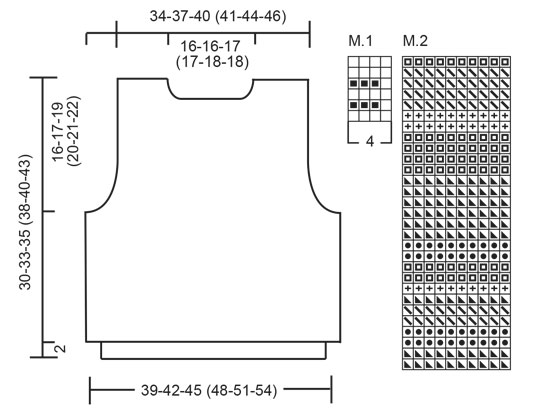

What can you do with our patterns? You can share DROPS patterns online, using the pattern original picture, materials, name and number. But you are NOT ALLOWED to reproduce the complete pattern digitally in any way. Yarn stores are welcome to use the DROPS pattern database to promote the sale of our assortment. You can print out our patterns, make as many copies as you’d like. The only thing we ask is that you don't make any changes / additions to the original printed document. And that the patterns according to the DROPS philosophy are given out to the consumers for free. Editorials that wish to publish our patterns in printed books or magazines can contact us for more information. The sale of garments based on DROPS patterns is permitted as long as they are sold as single items or per order. Further commercial use of the patterns is not permitted. It has to be clearly stated that the garment is made based on a design from DROPS DESIGN. The use of clothing labels of which DROPS DESIGN forms part is conditioned by the inclusion of the following text: “A DROPS DESIGN made by …..”. The use of DROPS photos for marketing purposes/sales is only permitted in connection with the use/sale of DROPS products. The photos may not be cut or edited and the logo should be clearly visible.
We reserve the right to withdraw the permission for use of our patterns at any time, notwithstanding the reason.
Each of our patterns has specific tutorial videos to help you.
These step-by-step tutorials might also help you:
Why is the knitting/crochet tension so important?
Knitting tension is what determines the final measurements of your work, and is usually measured per 10 x 10 cm. It is provided like so: number of stitches in width x number of rows in height - eg: 19 stitches x 26 rows = 10 x 10 cm.
The knitting tension is very individual; some people knit/crochet loosely while others work tightly. You adjust the knitting tension with the needle size, which is why the suggested needle size is only meant as a guide! You need to adjust this (up or down) to ensure that YOUR knitting tension matches the knitting tension provided in the pattern. If you work with a different knitting tension than provided you will have a different yarn consumption, and your work will have different measurements than what the pattern suggests.
The knitting tension also determines which yarns can replace each other. As long as you achieve the same knitting tension you can replace one yarn with another.
See DROPS lesson: How to measure your tension/gauge
See DROPS video: How to make a gauge tension swatch
How do I know how many balls of yarn I need?
The required amount of yarn is provided in grams, eg: 450 g. To calculate how many balls you’ll need you first need to know how many grams are in 1 ball (25g, 50g or 100g). This information is available if you click on the individual yarn quality on our pages. Divide the amount required with the amount of each ball. For example, if each ball is 50g (the most common amount), the calculation will be as follows: 450 / 50 = 9 balls.
Can I use a different yarn than what the pattern suggests?
The important thing when changing from one yarn to another is that the knitting/crochet tension remains the same. This is so that the measurements of the finished piece will be the same as on the sketch provided. It is easier to achieve the same knitting tension using yarns from the same yarn group. It is also possible to work with multiple strands of a thinner yarn to achieve the knitting tension of a thicker one. Please try our yarn converter. We recommend you to always work a test swatch.
Please NOTE: when changing yarn the garment might have a different look and feel to the garment in the photo, due to individual properties and qualities of each yarn.
See DROPS lesson: Can I use a different yarn than the one mentioned in the pattern?
What are the yarn groups?
All our yarns are categorised into yarn groups (from A to F) according to thickness and knitting tension – group A contains the thinnest yarns and group F the thickest. This makes it easier for you to find alternative yarns to our patterns, should you wish to switch yarn. All yarns within the same group have a similar knitting tension and can easily replace each other. However, different yarn qualities have different structures and properties which will give the finished work a unique look and feel.
How do I use the yarn calculator?
At the top of all our patterns you’ll find a link to our yarn calculator, which is a helpful tool should you wish to use a different yarn than suggested. By filling in the yarn quality you wish to replace, the amount (in your size) and number of strands, the calculator will present good alternative yarns with the same knitting tension. Additionally it will tell you how much you’ll require in the new qualities and whether you’ll need to work with multiple strands. Most skeins are 50g (some are 25g or 100g).
If the pattern is worked with multiple colours, every colour will have to be calculated separately. Similarly, if the pattern is worked with several strands of different yarns (for example 1 strand Alpaca and 1 strand Kid-Silk) you will have to find alternatives for each, individually.
Why do you show discontinued yarns in the patterns?
Since different yarns have different qualities and textures we have chosen to keep the original yarn in our patterns. However, you can easily find options among our available qualities by using our yarn calculator, or simply pick a yarn from the same yarn group.
It is possible that some retailers still have discontinued yarns in stock, or that someone has a few skeins at home that they would like to find patterns for.
The yarn calculator will provide both alternative yarn as well as required amount in the new quality.
What size should I knit?
If you think it's hard to decide what size to make, it can be a good idea to measure a garment you own already and like the size of. Then you can pick the size by comparing those measures with the ones available in the pattern's size chart.
You'll find the size chart at the bottom of the pattern.
See DROPS lesson: How to read size chart
Why do I get the wrong knitting tension with the suggested needle size?
The needle size provided in the pattern serves only as a guide, the important thing is to follow the knitting tension. And since knitting tension is very individual, you will have to adjust the needle size to ensure that YOUR tension is the same as in the pattern – maybe you’ll have to adjust 1, or even 2 needle sizes, up or down to achieve the correct tension. For this, we recommend that you work test swatches.
Should you work with a different knitting tension than the one provided, the measurements of the finished garment might deviate from the measurement sketch.
See DROPS lesson: How to measure your tension/gauge
See DROPS video: How to make a tension/gauge swatch
Why is the pattern worked top-down?
Working a garment top-down provides more flexibility and room for personal adjustment. For example it is easier to try the garment on while working, as well as making adjustments to length of yoke and shoulder caps.
The instructions are carefully explaining every step, in the correct order. Diagrams are adjusted to the knitting direction and are worked as usual.
How do I work according to a knitting diagram?
The diagram depicts all rows/rounds, and every stitch seen from the right side. It is read from bottom to top, from right to left. 1 square = 1 stitch.
When working back and forth, every other row is worked from the right side and every other row is worked from the wrong side. When working from the wrong side, the diagram will have to be worked reversed: from left to right, knit stitches are purled, purl stitches are knit etc.
When working in the round every round is worked from the right side and the diagram are worked from right to left on all rounds.
See DROPS lesson: How to read knitting diagrams
How do I work according to a crochet diagram?
The diagram depicts all rows/rounds, and every stitch seen from the right side. It is worked from bottom to top, from right to left.
When working back and forth every other row is worked from the right side: from right to left and every other row is worked from the wrong side: from left to right.
When working in the round, every row in the diagram are worked from the right side, from right to left.
When working a circular diagram you start in the middle and work your way outwards, counter clockwise, row by row.
The rows usually start with a given number of chain stitches (equivalent to the height of the following stitch), this will either be depicted in the diagram or explained in the pattern.
See DROPS lesson: How to read crochet diagrams
How do I work several diagrams simultaneously on the same row/round?
Instructions for working several diagrams after each other on the same row/round, will often be written like so: “work A.1, A.2, A.3 a total of 0-0-2-3-4 times". This means you work A.1 once, then A.2 is worked once, and A.3 is repeated (in width) the number of times provided for your size – in this case like so: S = 0 times, M = 0 times, L=2 times, XL= 3 times and XXL = 4 times.
The diagrams are worked as usual: begin with the first row in A.1, then work the first row in A.2 etc.
See DROPS lesson: How to read knitting diagrams
See DROPS lesson: How to read crochet diagrams
Why are the sleeves shorter in larger sizes?
The total width of the garment (from wrist-to-wrist) will be larger in the larger sizes, despite the actual sleeves being shorter. The larger sizes have longer sleeve caps and wider shoulders, so there will be a good fit in all sizes.
Where on the garment is the length measured?
The measurement sketch/schematic drawing provides information regarding the full length of the garment. If it’s a jumper or a jacket the length is measured from the highest point on the shoulder closest to the neckline, and straight down to the bottom of the garment. It is NOT measured from the tip of shoulder. Similarly, the length of yoke is measured from the highest point on the shoulder and down to where yoke is split into body and sleeves.
On a jacket measures are never taken along bands, unless specifically stated. Always measure inside band stitches when measuring the length.
See DROPS lesson: How to read a schematic drawing
What is a repeat?
Diagrams are often repeated on the round or in height. 1 repeat is the diagram the way it appears in the pattern. If it says to work 5 repeats of A.1 in the round, then you work A.1 a total of 5 times after/next to each other in the round. If it says to work 2 repeats of A.1 vertically/in height you work the entire diagram once, then begin again at the start and work the entire diagram one more time.
Why does the piece start with more chain stitches than it’s worked with?
Chain stitches are slightly narrower than other stitches and to avoid working the cast-on edge too tight, we simply chain more stitches to begin with. The stitch count will be adjusted on the following row to fit the pattern and measurement sketch.
Why increase before the rib edge when the piece is worked top-down?
The rib edge is more elastic and will contract slightly compared to, for example, stocking stitch. By increasing before the rib edge, you avoid a visible difference in width between the rib edge and the rest of the body.
Why increase in the cast-off edge?
It’s very easy to cast off too tightly, and by making yarn overs while casting off (and simultaneously casting these off) you avoid a too tight cast off edge.
See DROPS video: How to bind off with yarn overs (yo)
How do I increase/decrease on every 3rd and 4th row/round alternately?
To achieve an even increase (or decrease) you can increase on, for example: every 3rd and 4th row alternately, like so: work 2 rows and increase on the 3rd row, work 3 rows and increase on the 4th. Repeat this until the increase is complete.
See DROPS lesson: Increase or decrease 1 st on every 3rd and 4th row alternately
How can I work a jacket in the round instead of back and forth?
Should you prefer to work in the round instead of back and forth, you may of course adjust the pattern. You’ll need to add steeks mid-front (usually 5 stitches), and follow the instructions. When you would normally turn and work from the wrong side, simply work across the steek and continue in the round. At the end you’ll cut the piece open, pick up stitches to work bands, and cover the cut edges.
See DROPS video: How to knit steeks and cut open
Can I work a jumper back and forth instead of in the round?
Should you prefer to work back and forth instead of in the round, you may of course adjust the pattern so you work the pieces separately and then assemble them at the end. Divide the stitches for the body in 2, add 1 edge stitch in each side (for sewing) and work the front and back pieces separately.
See DROPS lesson: Can I adapt a pattern for circular needles into straight needles?
Why is the pattern slightly different than what I see in the photo?
Pattern repeats can vary slightly in the different sizes, in order to get the correct proportions. If you’re not working the exact same size as the garment in the photo, yours might deviate slightly. This has been carefully developed and adjusted so that the complete impression of the garment is the same in all sizes.
Make sure to follow instructions and diagrams for your size!
How do I make a women’s size garment into a men’s size one?
If you have found a pattern you like which is available in women’s size it’s not very difficult to convert it to men’s size. The biggest difference will be the length of sleeves and body. Start working on the women size that you think would fit across the chest. The additional length will be worked right before you cast off for the armhole/sleeve cap. If the pattern is worked top-down you can add the length right after the armhole or before the first decrease on sleeve.
Regarding additional yarn amount, this will depend on how much length you add, but it is better with a skein too many than too few.
How do I prevent a hairy garment from shedding?
All yarns will have excess fibres (from production) that might come off as lint or shedding. Brushed yarns (ie hairier yarns) have more of these loose, excess fibres, causing more shedding.
Shedding also depends on what is worn under or over the garment, and whether this pulls at the yarn fibres. It’s therefore not possible to guarantee that there will be no shedding
Below are some tips on how to get the best result when working with hairier yarns:
1. When the garment is finished (before you wash it) shake it vigorously so the looser hairs come off. NOTE: do NOT use a lint roller, brush or any method that pulls at the yarn.
2. Place the garment in a plastic bag and put it in your freezer - the temperature will cause the fibres to become less attached to each other, and excess fibres will come off easier.
3. Leave in the freezer for a few hours before taking it out and shaking it again.
4. Wash the garment according to the instructions on the yarn label.
Why does my garment pill?
Pilling is a natural process that happens to even the most exclusive of fibers. It's a natural sign of wear and tear that is hard to avoid, and that is most visible in high friction areas of your garment like a sweater's arms and cuffs.
You can make your garment look as new by removing the pilling, using a fabric comb or a pill/lint remover.
In the meantime, you can read the questions and answers that others have left to this pattern or join the DROPS Workshop on Facebook to get help from fellow knitters/crocheters!
DROPS Children 7-13 |
||||||||||||||||||||||
|
|
||||||||||||||||||||||
Cardigan (short or long) and vest / slipover in Karisma Classic
DROPS Children 7-13 |
||||||||||||||||||||||
|
CARDIGAN: Gauge: 20 sts and 26 rows on larger needles in Pattern 1 = 10 x 10 cm Pattern: See chart. One chart equals one repeat of the pattern. The pattern is seen from the right side. Garter st, when knitting flat: Knit all sts, all rows. Garter st, when knitting in the round: *Rnd 1, knit. Rnd 2, purl.* Repeat from * - *. Rib: * K 1, P 1 *. Repeat from * - *. Pocket lining: (Knit 2). Cast on 20-22-22 (24-26-28) sts on larger needles and in knit stockinette stitch for 5-5-6 (6-6-7) cm , and then for 5-5-6 (6-6-7) cm , in reverse stockinette stitch. Do not bind off. Put sts on a holder. The wrong side (purl side) will be inside the pocket. Short model: If a short model is desired knit as follows: Body: The measurements at the armholes, neck and binding-off should be reduced by 5-6-6 (7-7-7) cm . Finished dimensions = 45-48-53 (55-57_60) cm . Pick up approximately 10-18 sts fewer on the button band and bind off for 1 buttonhole fewer. Reduce amount of yarn by 50 grams. Body: Cast on 161-173-185 (197-209-217) sts on larger circular needles and knit 4 rows Garter Stitch. Then knit Pattern 1. When the work measures 13.5-14.5-15.5 (16-16-17) cm , knit the next row as follows: knit 10-11-12 (12-14-14) sts, put 20-22-22 (24-26-28) sts on a holder (for the pocket), knit until 30-33-34 (36-40-42) sts remain, put 20-22-22 (24-26-28) sts on a holder, knit remaining 10-11-12 (12-14-14) sts. On the next row put the pocket lining with the wrong side out (see instructions above) in on the row in the opening over the 20-22-22 (24-26-28) sts on the holder. Continue Pattern 1. When the work measures 31-34-37 (39-40-43) cm , knit the next row as follows: 38-41-44 (47-50-52) sts for the front, bind off 4 sts for armhole, 77-83-89 (95-101-105) sts for the back, bind off 4 sts for armhole, 38-41-44 (47-50-52) sts for the front. Knit each part separately from this point. Front: 38-41-44 (47-50-52) sts. Bind off for armholes on every other row: 2 sts 2-2-2 (3-3-3) times, 1 st 3 times. 31-34-37 (38-41-43) sts remain. When the work measures 45-49-54 (56-58-60) cm , bind off at the neck edge every other row: 8-8-9 (9-10-10) sts 1 time, 2 sts 3 times, 1 st 2 times. Bind off when the work measures 50-54-59 (62-64-67) cm . Back: 77-83-89 (95-101-105) sts. Then bind off for armholes as on the front. 63-69-75 (77-83-87) sts remain. When the work measures 48-52-57 (60-62-65) cm , bind off the center 31-31-33 (33-35-35) sts for the neck. Bind off 1 st on each neck edge on the next row. Bind off when the work measures 50-54-59 (62-64-67) cm . Sleeves: Cast on 34-36-42 (42-44-44) sts on double pointed needles with gray. Join, being careful not to twist the sts. Place a marker at the join and knit 4 rows Garter Stitch. Then knit Pattern 1. At the same time, when the work measures 4 cm , inc 1 st on each side of the marker 21-22-23 (25-26-26) times: Sizes 3/4 + 5/6 years: every other row. Sizes 7/8 + 9/10 years: alternately every 2nd and 3rd row. Sizes 11/12 + 13/14 years: every 3rd row. = 76-80-88 (92-96-96) sts. When the work measures 22-25-29 (33-36-39) cm , bind off 2 sts on each side of the marker and knit the rest back and forth on the needles. Bind off for sleeve caps on each side every other row: 4 sts 6 times. Bind off when the work measures 28-31-35 (39-42-45) cm . Assembly: Sew shoulder seams. Pick up approx. 80-96 sts around the neck on smaller circular needles and knit garter st for 6-6-7 (7-8-8) cm , bind off. Pick up approximately 110-120-130 (136-140-148) sts along the left front on smaller circular needles and knit in rib for 2.5 cm back and forth on the needle. Bind off. Repeat along the right front, but after 1 cm make 6-6-7 (7-8-8) buttonholes evenly distributed along the row. 1 buttonhole = bind off 2 sts and cast on 2 new sts over the bound-off sts on the next row. Put the sts from the holder for the pocket on larger needles and knit 4 rows garter st, bind off. Fold the pocket lining over double, sew the edges together with back sts and then sew the pocket lining into the first row of garter st on the pocket. Sew on sleeves and buttons. ________________________________________ VEST IN KARISMA CLASSIC Sizes: 3/4-5/6-7/8 (9/10-11/12-13/14) years. Finished Measurements: 78-84-90 (96-102-108) cm Materials: Garnstudio Karisma Classic, 100% Pure New Wool. 100-100-100 (100-100-150) g in Col. 53, Charcoal 50-50-50 (100-100-100) g in Col. 48, Wine Red 50-50-50 (100-100-100) g in Col. 21, Light Gray 50-50-50 (50-50-50) g in Col. 01, Natural 50-50-50 (50-50-50) g in Col. 49, Rust Alternate Yarns: * Garnstudio Karisma Superwash, 100% Superwash wool * Garnstudio Muskat, 100% mercerized Egyptian Cotton, * Garnstudio Bomull-Lin, 53% Egyptian Cotton, 47% Linen DROPS 2 mm and 4 mm circular and double pointed needles, or sizes needed to obtain correct gauge. Gauge: 20 sts and 26 rows on larger needles in stockinette stitch = 10 x 10 cm Pattern: Refer to Chart for Pattern 2. The pattern is seen from the right side and is knit in rib (see instructions below). Knit Pattern 2 in rib as follows: * K 3, P 3 *. Repeat from * - *. Rib: * K 1, P 1 *. Repeat from * - *. Body: Cast on 156-168-180 (192-204-216) sts on smaller circular needles with Charcoal. Join, being careful not to twist the sts. Place a marker at the join and knit in rib for 2 cm . Change to larger circular needles and knit in Pattern - see instructions above. When the work measures 13-15-14 (16-17-19) cm , knit the next row as follows: bind off 2 sts for armhole, 74-80-86 (92-98-104) sts for the front, bind off 4 sts for armhole, 74-80-86 (92-98-104) sts for the back, bind off 2 sts for armhole. Knit each part separately from this point. Front: 74-80-86 (92-98-104) sts. Bind off for armholes every other row: 2 sts 1-1-1 (2-2-2) times, 1 st 1-1-1 (1-1-2) times. 68-74-80 (82-88-92) sts. When the work measures 20-22-24 (26-28-30) cm , bind off the center 8-8-10 (10-12-12) sts for the front neck. Bind off at each neck edge every other row: 4 sts 1 time, 3 sts 1 time, 2 sts 1 time, 1 st 3 time. At the same time, when the work measures 29-32-33 (36-38-41) cm , bind off for the shoulder every other row: 9-10-7 (8-8-9) sts 1 time, 9-11-8 (8-9-9) sts 1 time, 8- 8- 8 (8-9-10) sts 1 time. All sts should now be bind off and the work measures approximately 30-33-35 (38-40-43) cm . Back: 74-80-86 (92-98-104) sts. Bind off for armholes and shoulders as on the front. When the work measures 28-31-32 (36-38-41) cm , bind off the center 30-30-32 (32-34-34) sts for the neck. Then bind off 1 st on each neck edge on the next row. Assembly: Sew shoulder seams. Pick up approx. 80-110 sts around the neck on smaller double pointed needles with charcoal and knit rib for 1.5 cm . Bind off. |
||||||||||||||||||||||
Diagram explanations |
||||||||||||||||||||||
|
||||||||||||||||||||||

|
||||||||||||||||||||||

|
||||||||||||||||||||||
|
Have you made this or any other of our designs? Tag your pictures in social media with #dropsdesign so we can see them! Do you need help with this pattern?You'll find tutorial videos, a Comments/Questions area and more by visiting the pattern on garnstudio.com. © 1982-2024 DROPS Design A/S. We reserve all rights. This document, including all its sub-sections, has copyrights. Read more about what you can do with our patterns at the bottom of each pattern on our site. |
||||||||||||||||||||||
With over 40 years in knitting and crochet design, DROPS Design offers one of the most extensive collections of free patterns on the internet - translated to 17 languages. As of today we count 309 catalogues and 11629 patterns translated into English (UK/cm). 11629
We work hard to bring you the best knitting and crochet have to offer, inspiration and advice as well as great quality yarns at incredible prices! Would you like to use our patterns for other than personal use? You can read what you are allowed to do in the Copyright text at the bottom of all our patterns. Happy crafting!










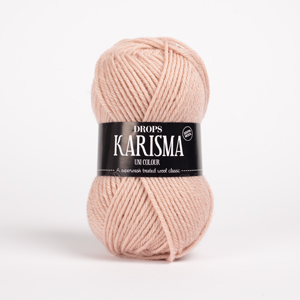





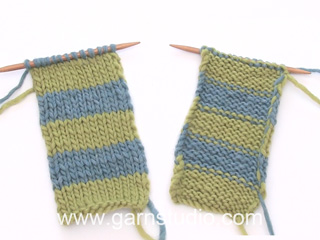
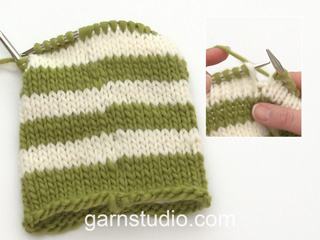







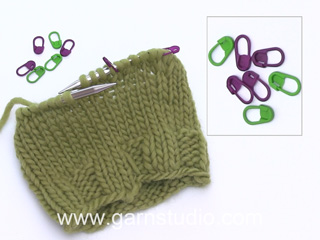
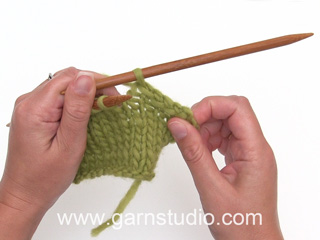


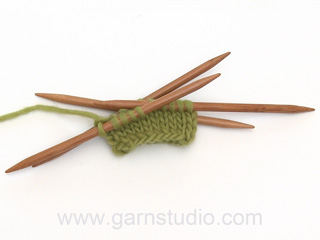








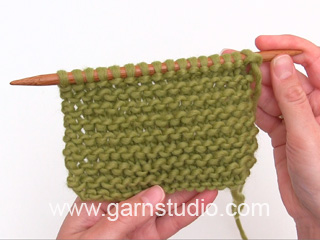











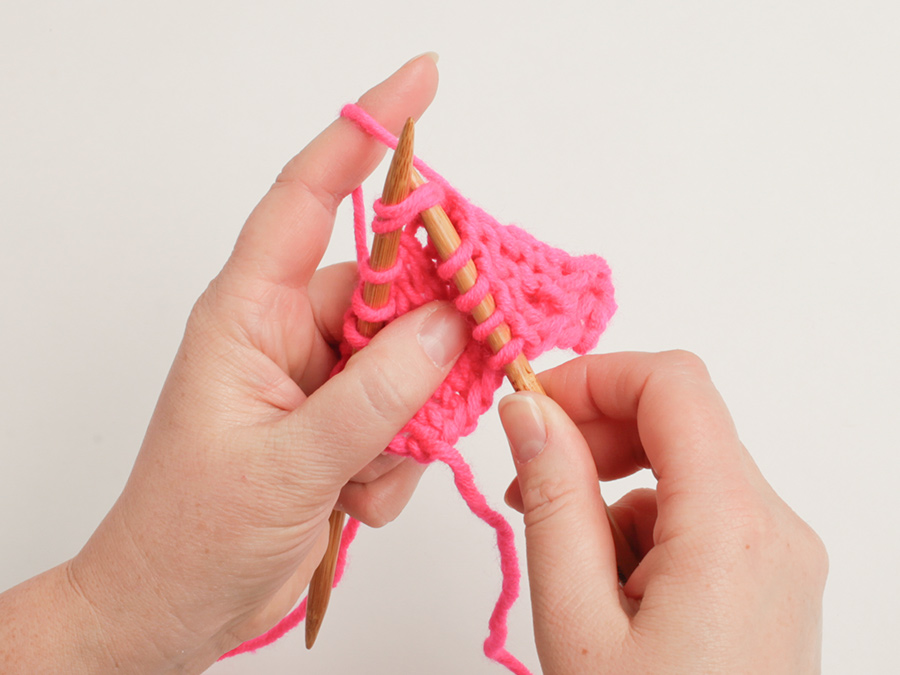








Comments / Questions (32)
Bonjour, Je n'ai pas trouvé la référence des boutons que vous préconisez pour ce modèle sur votre site. Quel est le diamètre de ces boutons ? Merci d'avance.
04.06.2024 - 14:44DROPS Design answered:
Bonjour Mme Auffret, cette référence n'est effectivement plus disponible, ces boutons faisaient 20 mm de diamètre. Bon tricot!
04.06.2024 - 16:05Bonjour Vos explications me sont précieuses. Je ne pense pas me tromper mais je crois qu'il reste plutôt 44 mailles et non 43.
31.05.2024 - 14:36DROPS Design answered:
Tout à fait, j'ai dû faire une faute de frappe, je corrige de suite la réponse, vous aurez bien 44 et non 43 mailles. Bon tricot!
31.05.2024 - 16:54Bonjour Désolée, c'est encore moi. Combien de mailles doit-il me rester en haut de la manche pour la veste 11/12 ans quand toutes les diminutions ont été faites ? Merci d'avance.
30.05.2024 - 21:11DROPS Design answered:
Bonjour Mme Auffret, vous aviez 96 mailles, vous avez rabattu 1 x 2 m de chaque côté puis 4 x 6 m de chaque côté, soit 96 - (2x 2côtés) - (4x6x2 côtés) = il reste 44 mailles. Bon tricot!
31.05.2024 - 07:38Bonjour, Merci pour votre précédente réponse. Je suis à 36 cm pour la manche de la veste pour 11/12 ans. J'ai rabattu 2 mailles de chaque côté de l'anneau marqueur. A quel moment je rabats pour le haut de la manche de chaque côté tous les 2 rangs: 4 mailles 6 fois ?
30.05.2024 - 13:32DROPS Design answered:
Bonjour Mme Auffret, quand vous avez rabattu les 2 mailles de chaque côté = vous tricotez désormais en rangs à partir du milieu sous la manche et rabattez les 2 premières mailles du tour/rang, terminez le rang, tournez et rabattez les 2 premières mailles, terminez le rang sur l'envers. Vous rabattez maintenant 4 mailes au début des 12 rangs suivants (6 x 4 m de chaque côté), continuez sans rabattre si besoin jusqu'à ce que la manche mesure 42 cm, rabattez les mailles restantes. Bon tricot!
30.05.2024 - 15:57Bonjour, Je tricote les manches pour réaliser un gilet 11/12 ans. Je dois augmenter 1 maille de chaque côté de l'anneau marqueur. Donc je fais des jetés de chaque côté de l'anneau marqueur,je tricote le rang. Au rang suivant je tricote les jetés. Et quand je reviens à l'anneau marqueur je refais des jetés pour augmenter. Est-ce bien ainsi qu'il faut faire pour augmenter tous les 3 rangs comme vous le préconisez ?
27.05.2024 - 14:29DROPS Design answered:
Bonjour Mme Auffret, pour les manches, on doit augmenter tous les 3 rangs en taille 11/12 ans, autrement dit, procédez ainsi: *1 tour avec augmentations, 2 tours sans augmentations*, et répétez ces 4 tours jusqu'à ce que vous ayez augmenté 26 fois (52 vous avez 96 mailles sur l'aiguille). Bon tricot!
27.05.2024 - 16:24Bonjour, Pourquoi le nombre de mailles proposées pour ce modèle n'est pas un multiple de 4 puisque M1 est un diagramme qui se réalise sur 4 mailles? Il y a sans doute quelque chose qui m'échappe. Merci d'avance pour vos explications qui m'aident bien.
28.04.2024 - 14:30DROPS Design answered:
Bonjour Mme Auffret, pour que le motif soit symétrique, on répète les 4 mailles de M.1 et on termine par la 1ère maille de M.1, le nombre de mailles est ainsi divisible par 4 + 1 maille.. Bon tricot!
29.04.2024 - 09:31Rebonjour, Encore moi, désolée. Je dois comprendre avant de commencer. Qu'entendez-vous par patron 1 ? Le point fantaisie pour la veste est-ce le diagramme M.1 ? Merci d'avance.
27.03.2024 - 15:41DROPS Design answered:
Bonjour Mme Auffret, tout à fait, c'est bien du diagramme M.1 dont il s'agit. Notez bien que la légende des diagrammes est expliquée vu sur l'endroit, autrement dit, 1 m end sur l'endroit se tricote à l'endroit sur l'endroit et à l'envers sur l'envers, mais 1 maille envers sur l'endroit doit se tricoter à l'endroit sur l'envers. Bon tricot!
02.04.2024 - 12:43Bonjour Que voulez-vous dire par "modèle court" ? Vous dites :"Si vous tricotez le modèle court" Faut-il comprendre si je veux une veste plus courte? Merci d'avance pour votre réponse.
27.03.2024 - 15:29DROPS Design answered:
Bonjour Mme Auffret, le modèle court fera 45-48-53 (55-57-60) cm de hauteur totale, le modèle long fera 50-54-59 (62-64-67) cm autrement dit comme dans le schéma. Si vous choisissez la version courte, il faudra faire les emmanchures 5-6-6 (7-7-7) cm avant la hauteur indiquée dans les explications correspondant à la version longue. Pensez à réduire d'autant la hauteur avant l'encolure. Bon tricot!
02.04.2024 - 12:42Bonjour, Je viens de lire l'explication de ce modèle mais je ne comprends pas à quoi correspondent les chiffres ci-dessous. Je n'en ai encore jamais rencontré pour les autres modèles. [2» - 2» - 2-3/8» (2-3/8» - 2 3/8» - 2.75»)] Merci d'avance pour votre réponse.
20.03.2024 - 18:12DROPS Design answered:
Bonjour Mme Auffret, ces indications correspondent à celles en pouces indiquées pour certains des vieux modèles; suivez l'ordre des tailles comme indiqué dans l'en-tête, sans suivre les indications entre crochets. Bon tricot!
21.03.2024 - 08:43Which side of the pocket is considered the "wrong side (purl side)" since half the pocket is knit in stockinette and half in reverse stockinette. Please clarify. Thank you.
02.03.2023 - 16:58DROPS Design answered:
Dear Amy, the side with purled stitches should be inside the pocket. Happy knitting!
03.03.2023 - 08:43